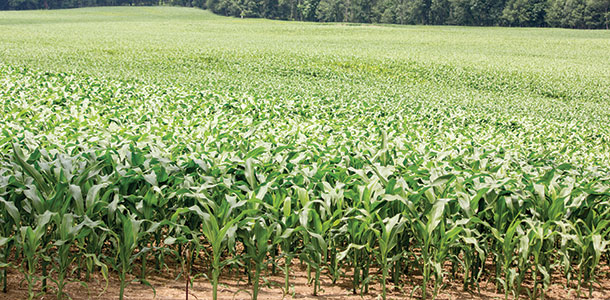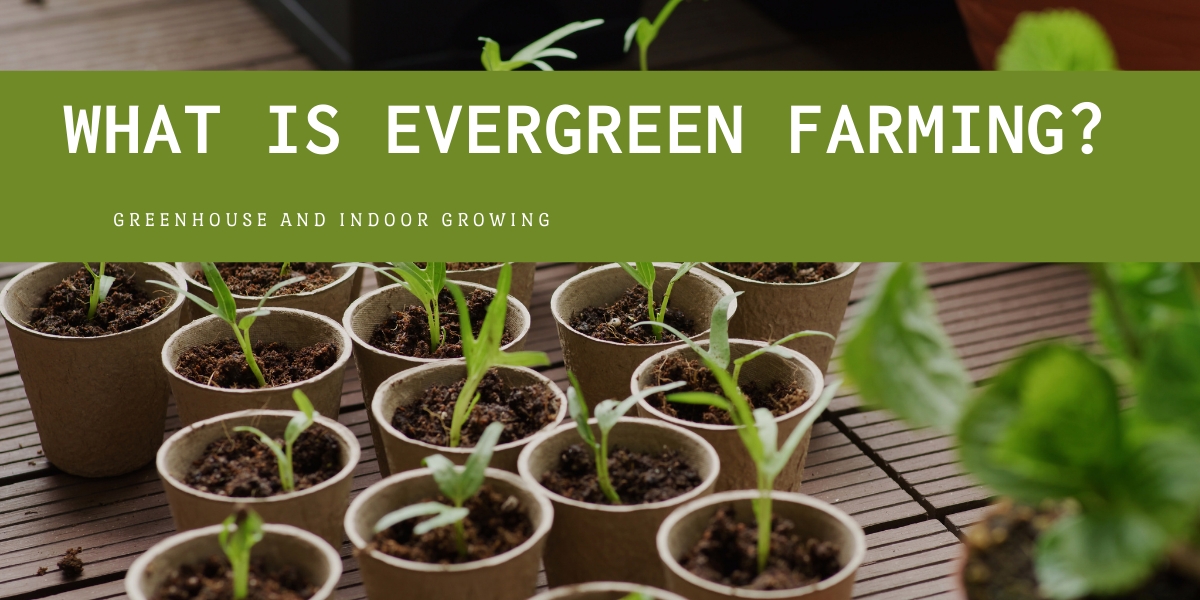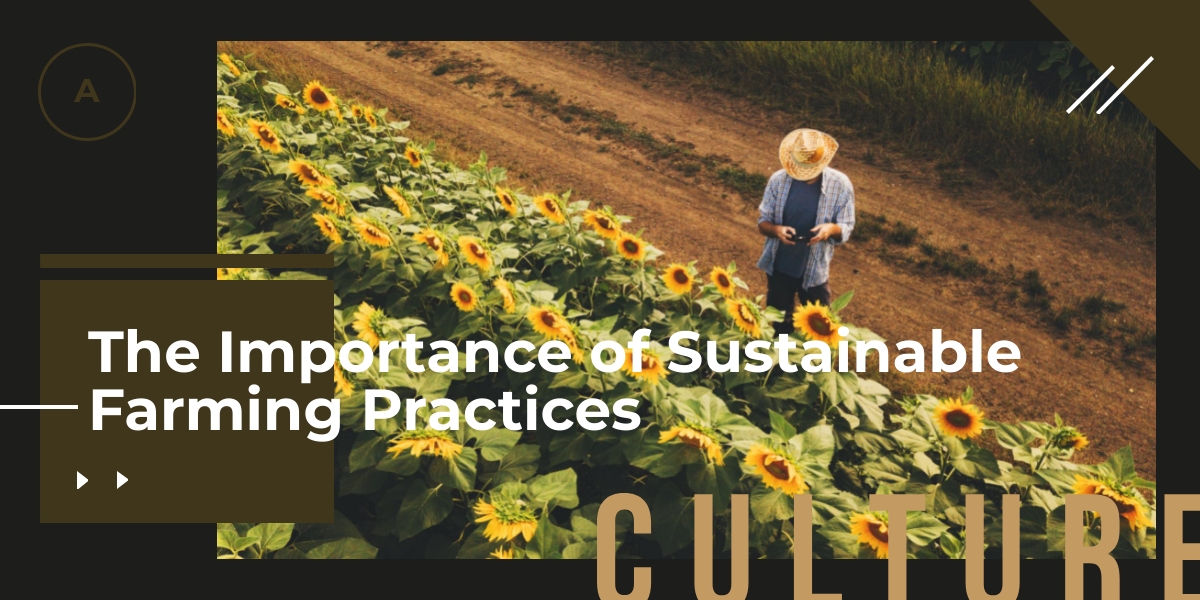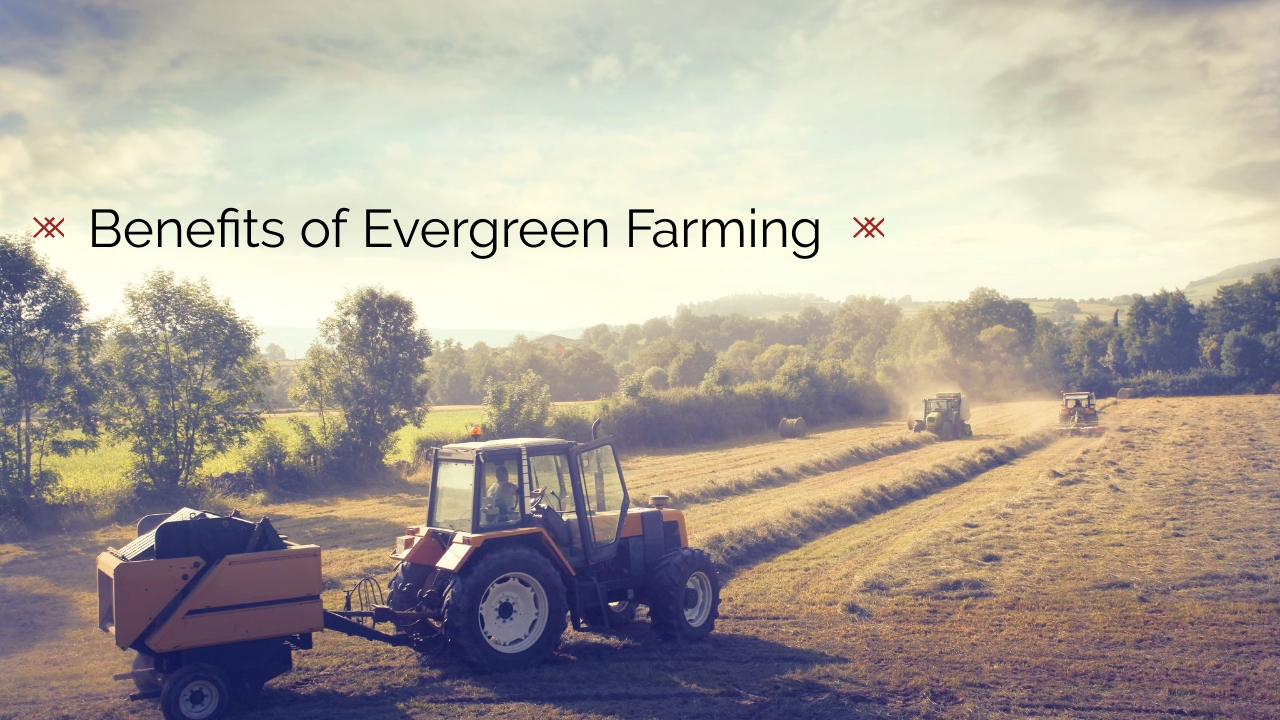
Unveiling the Secrets of Evergreen Farming: How to Sustainably Cultivate a Thriving Farm

Welcome to the world of evergreen farming, where sustainability and productivity go hand in hand. As the demand for organic and locally sourced produce continues to rise, farmers are embracing new techniques to cultivate thriving farms that can withstand the test of time. In this guide, we will unveil the secrets behind evergreen farming and explore the innovative practices that are revolutionizing the agricultural industry. From regenerative farming methods to advanced technology, we will delve into the strategies that enable farmers to cultivate a bountiful harvest while minimizing environmental impact. Whether you are a seasoned farmer looking to enhance your operations or someone interested in sustainable agriculture, this guide will provide you with the knowledge and inspiration to embark on a journey towards cultivating a thriving farm that stands the test of time. Get ready to discover the key principles and practices that will unlock the secrets of evergreen farming and pave the way for a sustainable future.
What is Evergreen Farming?

Evergreen farming is a holistic approach to agriculture that focuses on sustainability and long-term productivity. Unlike traditional farming methods that deplete the soil and rely heavily on chemical inputs, evergreen farming aims to create a self-sustaining ecosystem where crops and livestock thrive together. It combines regenerative practices, such as cover cropping and crop rotation, with modern technology to optimize resource utilization and minimize waste. The goal of evergreen farming is to cultivate a diverse and resilient farm that can withstand environmental challenges and provide a consistent yield year after year.
One of the key principles of evergreen farming is the emphasis on soil health. By prioritizing soil fertility and biodiversity, farmers can create an environment that supports the growth of healthy crops and reduces the need for external inputs. This sustainable approach not only benefits the environment but also enhances the nutritional value of the produce, making it more desirable for consumers. Additionally, evergreen farming promotes the use of renewable energy sources and efficient water management techniques to minimize the farm’s carbon footprint.
In the next sections, we will explore the importance of sustainable farming practices and the benefits of evergreen farming in more detail.
The Importance of Sustainable Farming Practices

Sustainable farming practices are essential for the long-term viability of our agricultural systems. As the global population continues to grow, the demand for food and resources is increasing at an alarming rate. Traditional farming methods, characterized by high chemical inputs and intensive land use, are not sustainable in the long run. They deplete the soil, contaminate water sources, and contribute to climate change. In contrast, sustainable farming practices, such as those employed in evergreen farming, offer a solution to these challenges.
By adopting sustainable farming practices, farmers can minimize their environmental impact while maintaining or even increasing their productivity. These practices focus on preserving natural resources, reducing waste, and promoting biodiversity. They include techniques like organic farming, agroforestry, and regenerative agriculture. Sustainable farming also involves responsible water management, efficient energy use, and the reduction of greenhouse gas emissions. By implementing these practices, farmers can protect the environment, enhance soil health, and produce high-quality, nutrient-rich food.
Benefits of Evergreen Farming

Evergreen farming offers a multitude of benefits for both farmers and the environment. By adopting sustainable practices, farmers can improve soil health, increase crop resilience, and reduce the need for synthetic fertilizers and pesticides. This not only saves costs but also minimizes the negative impact on the environment and human health. Furthermore, evergreen farming promotes biodiversity by creating habitats for beneficial insects, birds, and other wildlife. This, in turn, helps to control pests naturally and reduces the reliance on chemical pesticides.
Another significant benefit of evergreen farming is its ability to sequester carbon from the atmosphere and mitigate climate change. By incorporating regenerative practices such as cover cropping and agroforestry, farmers can capture and store carbon in the soil, reducing greenhouse gas emissions. This carbon sequestration not only helps to combat climate change but also improves soil structure and fertility.
Additionally, evergreen farming supports the local economy by providing fresh, locally sourced produce to the community. As consumers become more aware of the importance of sustainable agriculture, the demand for organic and locally grown food continues to rise. By cultivating a thriving farm that adheres to sustainable practices, farmers can tap into this market and establish themselves as trusted suppliers of high-quality produce.
In the following sections, we will delve into the key principles of evergreen farming and provide practical tips on how to implement them on your farm.
Key Principles of Evergreen Farming
1. **Soil Health**: Soil health is the foundation of evergreen farming. By maintaining a healthy soil ecosystem, farmers can ensure the long-term productivity of their farm. This involves practices like adding organic matter, minimizing soil disturbance, and promoting soil biodiversity.
2. **Crop Rotation**: Crop rotation is a fundamental practice in evergreen farming. By rotating crops, farmers can disrupt pest and disease cycles, improve soil fertility, and reduce the need for chemical inputs. It is essential to choose crops that complement each other and have different nutrient requirements.
3. **Cover Cropping**: Cover cropping involves planting cover crops between main cash crops to protect the soil, improve soil structure, and add nutrients. Cover crops also help to suppress weeds and conserve water. Legumes, such as clover and peas, can fix nitrogen from the atmosphere, reducing the need for synthetic fertilizers.
4. **Agroforestry**: Agroforestry integrates trees and crops to create a diverse and productive farming system. Trees provide shade, windbreaks, and habitat for beneficial insects, while also producing fruits, nuts, or timber. Agroforestry systems can improve soil health, sequester carbon, and enhance biodiversity.
5. **Integrated Pest Management (IPM)**: Integrated Pest Management is an eco-friendly approach to pest control that combines biological, cultural, and chemical control methods. By monitoring pests and their natural enemies, farmers can implement targeted control measures, reducing the reliance on chemical pesticides.
6. **Efficient Water Management**: Water is a precious resource, especially in arid regions. Evergreen farming promotes efficient irrigation techniques such as drip irrigation and rainwater harvesting. These methods minimize water waste and ensure that crops receive the right amount of water at the right time.
7. **Renewable Energy**: Evergreen farming encourages the use of renewable energy sources to power farm operations. Solar panels, wind turbines, and biogas digesters can provide clean energy, reduce greenhouse gas emissions, and lower energy costs.
In the next sections, we will provide practical tips on how to plan, design, and implement evergreen farming practices on your farm.
Planning and Designing Your Evergreen Farm
Planning and designing your evergreen farm is a crucial step in ensuring its success and sustainability. Before starting, it is essential to assess your farm’s resources, including soil type, climate, water availability, and existing infrastructure. This information will help you make informed decisions about crop selection, irrigation methods, and other farm management practices.
Start by creating a farm map that outlines the different areas of your farm, including fields, water sources, buildings, and access roads. This map will serve as a visual guide when implementing your evergreen farming practices. Consider factors such as sun exposure, slope, and wind patterns when deciding where to plant crops or install structures like windbreaks or shade structures.
Next, analyze the soil on your farm to determine its fertility, pH, and nutrient content. This information will guide you in selecting the right crops and making any necessary amendments to improve soil health. Consider conducting a soil test to get accurate data about your soil’s nutrient levels and pH. Based on the results, you can adjust your fertilizer application and choose crops that are well-suited to your soil conditions.
Once you have assessed your resources and analyzed your soil, it’s time to plan your crop rotation and cover cropping strategy. Choose crops that have different nutrient requirements and complement each other in terms of pest and disease management. For example, planting legumes like beans or peas after a heavy feeder like corn can help replenish nitrogen levels in the soil. Similarly, planting cover crops like clover or rye during fallow periods can protect the soil, suppress weeds, and add organic matter.
In the following sections, we will explore crop selection, irrigation techniques, and pest management strategies in more detail.
Selecting the Right Crops for Evergreen Farming
Selecting the right crops is essential for the success of your evergreen farm. Consider factors such as market demand, soil type, climate, and your own experience and preferences when choosing crops to grow. Here are some tips to help you make informed decisions:
1. **Research Market Demand**: Before deciding on crops, research the market demand for different types of produce in your area. Consider factors such as consumer preferences, pricing trends, and potential competition. Focus on crops that have a high demand and are well-suited to your farming system.
2. **Consider Soil Type and Climate**: Different crops thrive in different soil types and climates. Consider the pH, drainage, and fertility of your soil when choosing crops. Also, take into account the average temperature, rainfall, and length of the growing season in your area. This information will help you select crops that are well-adapted to your farm’s conditions.
3. **Diversify Your Crop Selection**: Cultivating a diverse range of crops is beneficial for several reasons. It reduces the risk of crop failure due to pests or diseases, enhances soil health, and provides a variety of products to sell. Consider growing a mix of fruits, vegetables, grains, and legumes to maximize the benefits of diversity.
4. **Consider Crop Rotation**: Crop rotation is an integral part of evergreen farming. It helps to break pest and disease cycles, improve soil fertility, and reduce weed pressure. Plan your crop rotation carefully, considering factors such as nutrient requirements, growth habits, and pest vulnerabilities of different crops.
5. **Evaluate Your Farm’s Resources**: Assess your farm’s resources, such as equipment, labor availability, and infrastructure, when choosing crops. Consider crops that are compatible with your existing resources to minimize costs and maximize efficiency.
Remember that crop selection should be based on a combination of market demand, farm resources, and your own preferences and expertise. Experiment with different crops and varieties to find the ones that perform best on your farm.
In the following sections, we will explore irrigation techniques, pest management, and soil health practices that are essential for evergreen farming.
Implementing Sustainable Irrigation Techniques
Efficient water management is a critical aspect of evergreen farming. By implementing sustainable irrigation techniques, farmers can optimize water use, reduce waste, and ensure that crops receive the right amount of water at the right time. Here are some sustainable irrigation techniques to consider:
1. **Drip Irrigation**: Drip irrigation is a highly efficient irrigation method that delivers water directly to the root zone of plants. It minimizes water loss due to evaporation and reduces weed growth by avoiding wetting the entire soil surface. Drip irrigation also enables precise control of water application, allowing farmers to tailor irrigation schedules to the specific needs of each crop.
2. **Rainwater Harvesting**: Rainwater harvesting involves collecting and storing rainwater for later use. It can be done at different scales, from simple rain barrels to large-scale reservoirs. Rainwater harvesting helps to reduce reliance on groundwater and municipal water sources, especially during dry periods. It also reduces the risk of soil erosion and runoff, protecting water quality.
3. **Mulching**: Mulching is the practice of covering the soil surface with a layer of organic or inorganic materials. It helps to conserve soil moisture by reducing evaporation and suppressing weed growth. Organic mulches, such as straw or wood chips, also add organic matter to the soil as they break down.
4. **Smart Irrigation Scheduling**: Smart irrigation scheduling involves using weather data, soil moisture sensors, or plant-based indicators to determine when and how much water to apply. This helps to avoid over-irrigation and ensures that crops receive water only when they need it. Smart irrigation controllers can automate the irrigation process, taking into account factors such as rainfall, temperature, and crop water requirements.
5. **Micro-Sprinklers**: Micro-sprinklers are an alternative to traditional overhead sprinklers. They deliver water in a fine mist or spray, minimizing water loss due to evaporation and wind drift. Micro-sprinklers can be adjusted to deliver water directly to the root zone of plants, reducing water waste and improving irrigation efficiency.
Remember to regularly monitor soil moisture levels and adjust your irrigation schedule accordingly. Avoid over-irrigation, as it can lead to waterlogged soils and increased susceptibility to diseases. By implementing sustainable irrigation techniques, you can conserve water, save costs, and ensure the long-term viability of your evergreen farm.
In the next sections, we will explore pest and disease management strategies and soil health practices that are essential for evergreen farming.
Managing Pests and Diseases in an Eco-Friendly Way
Effective pest and disease management is crucial for the success of any farming operation. In evergreen farming, the goal is to manage pests and diseases in an eco-friendly way, minimizing the use of synthetic pesticides and protecting beneficial insects. Here are some strategies to consider:
1. **Integrated Pest Management (IPM)**: Integrated Pest Management is a holistic approach to pest control that combines biological, cultural, and chemical control methods. It involves monitoring pests and their natural enemies, implementing preventive measures, and using targeted control methods when necessary. IPM aims to minimize the use of chemical pesticides and promote natural pest control mechanisms.
2. **Crop Rotation**: Crop rotation is an effective strategy for managing pests and diseases. By rotating crops, farmers can disrupt pest and disease cycles, reducing their populations and preventing the buildup of pathogens in the soil. Choose crops that are not susceptible to the same pests and diseases to maximize the benefits of crop rotation.
3. **Beneficial Insects**: Encouraging beneficial insects, such as ladybugs, lacewings, and parasitic wasps, can help control pest populations naturally. These insects prey on common pests like aphids, caterpillars, and mites, reducing the need for chemical pesticides. Planting flowering plants, providing habitat, and avoiding broad-spectrum insecticides can attract and support beneficial insects on your farm.
4. **Physical Barriers**: Physical barriers, such as row covers or netting, can protect crops from pests like birds, rabbits, or insects. Use row covers to prevent insect infestations or netting to protect fruits from bird damage. These barriers provide a non-chemical method of pest control and can be removed.
Conclusion
In conclusion, the article “Unveiling the Secrets of Evergreen Farming: How to Sustainably Cultivate a Thriving Farm” sheds light on the innovative techniques and principles behind sustainable farming practices. By adopting evergreen farming methods, farmers can ensure the long-term health and productivity of their land while preserving the environment. The article emphasizes the importance of soil conservation, crop rotation, organic fertilizers, and natural pest control as key strategies for achieving sustainable agriculture. Additionally, it highlights the significance of community involvement, knowledge sharing, and continuous learning in cultivating thriving farms. Readers are encouraged to explore these practices, implement them on their own farms, and actively engage in discussions and knowledge exchange to foster a sustainable future for agriculture. Let us embark on this journey together to cultivate a greener, healthier, and more sustainable farming landscape.




